“To be able to walk out the door when you come home from a job and wander into the garden to do a bit of watering gives you time to be creative in your mind.”
– Mary Berry
We’re lucky to live in an area where water comes right out of the tap. It’s just a plain drink for us, so it’s easy to forget how important it is for sustaining life. For the healthiest plants, watering is key. We’ve put together a guide to the more complicated factors to keep your plants alive and thriving.
Important Considerations:
Each plant has their set preference for the moisture conditions that they prefer. These preferences don’t change very much each season and are the standard that you are trying to meet to keep your plants satisfied. There are a lot of external factors that can change how often you need to water your plants. Here’s how the weather and environment can change your plant care routines:
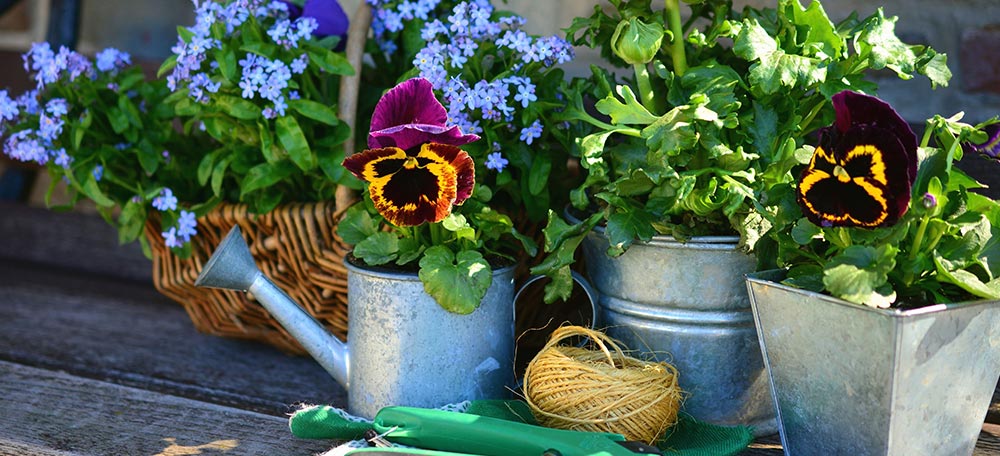
Temperature: The warmer it is outside, the more water your plants will need. Heat will zap moisture from your soil before your plants can even use it. Cooler weather will result in less active plants and soil that holds moisture better.
Wind: High winds will obviously dry out your plants fast. Air circulation plays a smaller but more consistent role. A container that is in the open is more exposed to air movement and will dry out faster than a sheltered container.
Sun and Shade: Direct sunshine will dry out a container quickly, while a shaded container will keep its moisture.
Container Size: A smaller container will dry out much faster than a larger one. While big containers have large reserves of protected soil in the middle, a smaller container is more prone to drying in heat, sun, and wind. A container less than 12 inches in diameter might dry out so fast that it can’t get through a warm day without multiple waterings!
Plants: The maturity and size of your plants are determining factors. As your plants grow and mature, they will need more water. While you still don’t want the soil to dry out and expose newly transplanted plants, younger plants won’t drink nearly as much water. Similarly, aggressive plants will drink faster than one with a slower growing habit.
Number of Plants: The more roots in a container, the more water it will need! If you start a container with only a few plants and let them grow, you’ll be watering less than packing a container full at the beginning of the season.

Matching Needs:
A container is a very closed system! Everything your plants need to survive has to be included in one location. You won’t be able to water some roots without watering the rest, so all plants in a container should have similar water needs. A successful container is not just about beautiful design but also picking plants that go well together. Healthy plants are the most stunning, after all.
Watering Tips:
For the best results, we have some tips on how to effectively water your containers this summer:
Water the Soil, Not the Plant: Most plants like to be watered thoroughly and then allowed to dry out a little before another watering. If your watering wets the soil surface and the foliage, you’ll be stuck watering more often and won’t get the best performance out of your plants. Instead, saturate the soil until water flows out the drainage on the bottom of the container. Avoid getting water on the foliage as much as possible. This can cause disease or rot, which are unsightly and unhealthy. Try to water right onto the soil surface, instead.
Smart Watering: Sometimes it can seem like you’ve saturated your container, but you haven’t. If your soil pulls away from the edges of the container, the water may spill through the drainage holes, having travelled down the sides instead of saturating the soil. If this happens, try to saturate the container once, let everything drain, and water again to better saturate the soil.
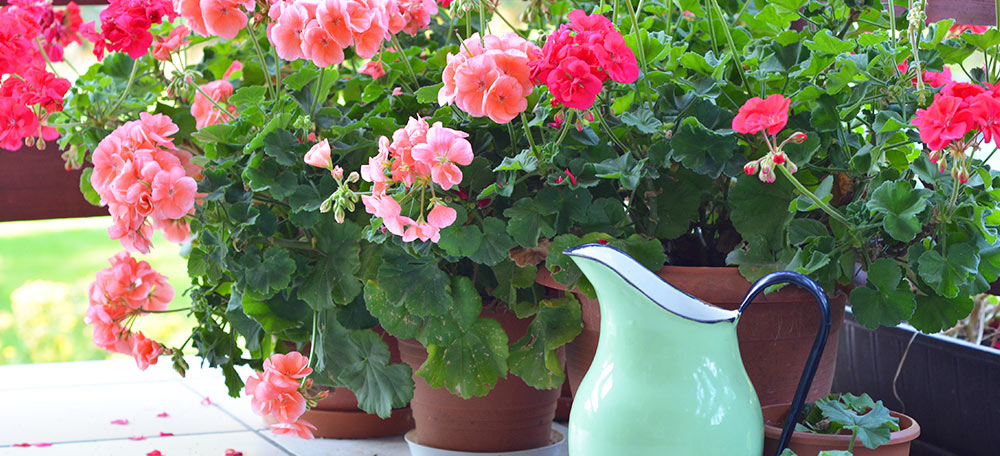
Watering Containers:
Keeping a container hydrated has a lot of unique challenges that might not be the same with plants in the ground. Many of the reasons your containers require more watering maintenance are what make them so eye-catching, too. Your containers are exposed to the sun on so many more sides, heating up the soil and roots. It is likely that your container soil is also more porous than what you have in your beds. The porous soil traps air and allows the roots to dry faster.
There are a few tricks to dodging the chore of frequent waterings. Using a big container will improve its ability to hold moisture. Mulching can help to retain water.
You can easily check how wet your container is by lifting or tilting it. The heavier it is, the moisture it has. Alternatively, if it’s very light, it probably needs water. If you haven’t mulched the top of your soil, looking at its color or feel can also be a good test.
Types of Plants:
As you’ll want to plant your container by matching watering needs, it’s convenient to group them together according to how thirsty they are:
High-Performance Annuals: Many popular container plants are high-performance plants that are greedy for as much water as they can get. They are usually aggressive growers and put on an impressive show for the season. The tradeoff is that they will need more watering than some other annuals. Their popularity speaks for itself: most gardeners think the intense colours and blooms are worth the work.
Water Lovers: Tropical plants love to be consistently moist and will be your thirstiest plants. You should re-pot all tropicals after you purchase them, as many are root bound. In a container, you’ll need to water your tropical plants as soon as you can see the surface of the soil drying out. These are the plants that will benefit the most from mulch to keep moisture in the container. Mulching your tropicals will give you better-looking plants with less daily work.
“Happy Medium” Plants: These are the Goldilocks plants that like their moisture to be just right and pair best with well-draining soil. The fool-proof way to check if these need to be watered is by poking a finger into the soil. If it’s dry up to your first knuckle, it’s time to water.
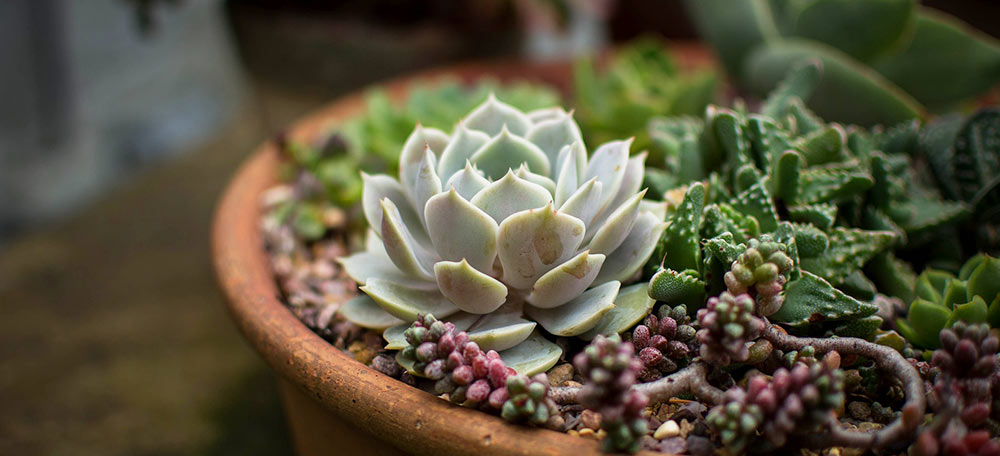
“Drought Tolerant” Plants: Plants that have a “drought tolerant” label will probably last longer between watering than other plants. Don’t be caught unprepared though, as hot and windy conditions can still dry these plants out fast enough to need water daily. It’s still a good practice to water your plants until the water flows out the bottom of the container, but don’t let them stay standing in a saucer or tray of water – they don’t like having wet feet.
Arid Plants: Succulents and cacti are not only irresistibly popular right now, but are also incredibly tolerant of dry conditions. Once they’ve established themselves, succulents can go weeks between waterings. Unless they are in a particularly hot or sunny location, or a smaller container, once a week might even be too much.
For such a simple concept, there are a lot of factors to keep in mind when it comes to watering your containers. A little bit of common sense goes a long way to make sure that your plants have all the resources they need to be healthy and vibrant all summer.


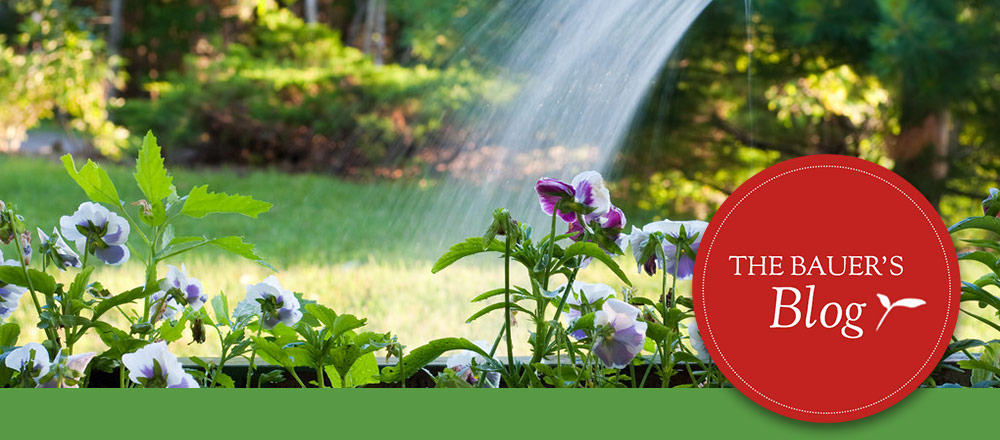

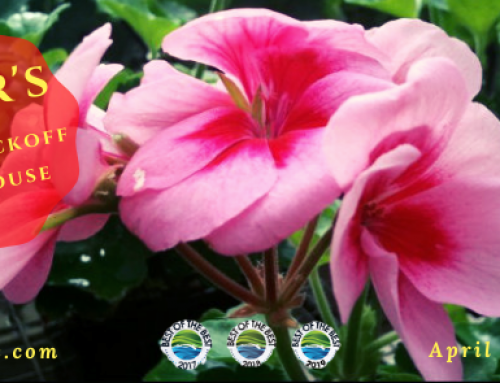
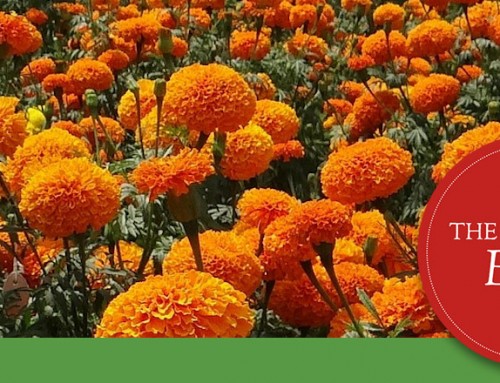
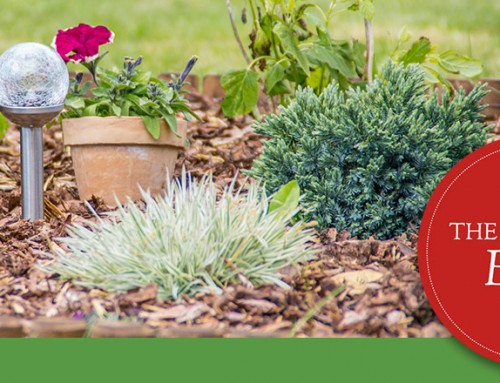
Leave A Comment